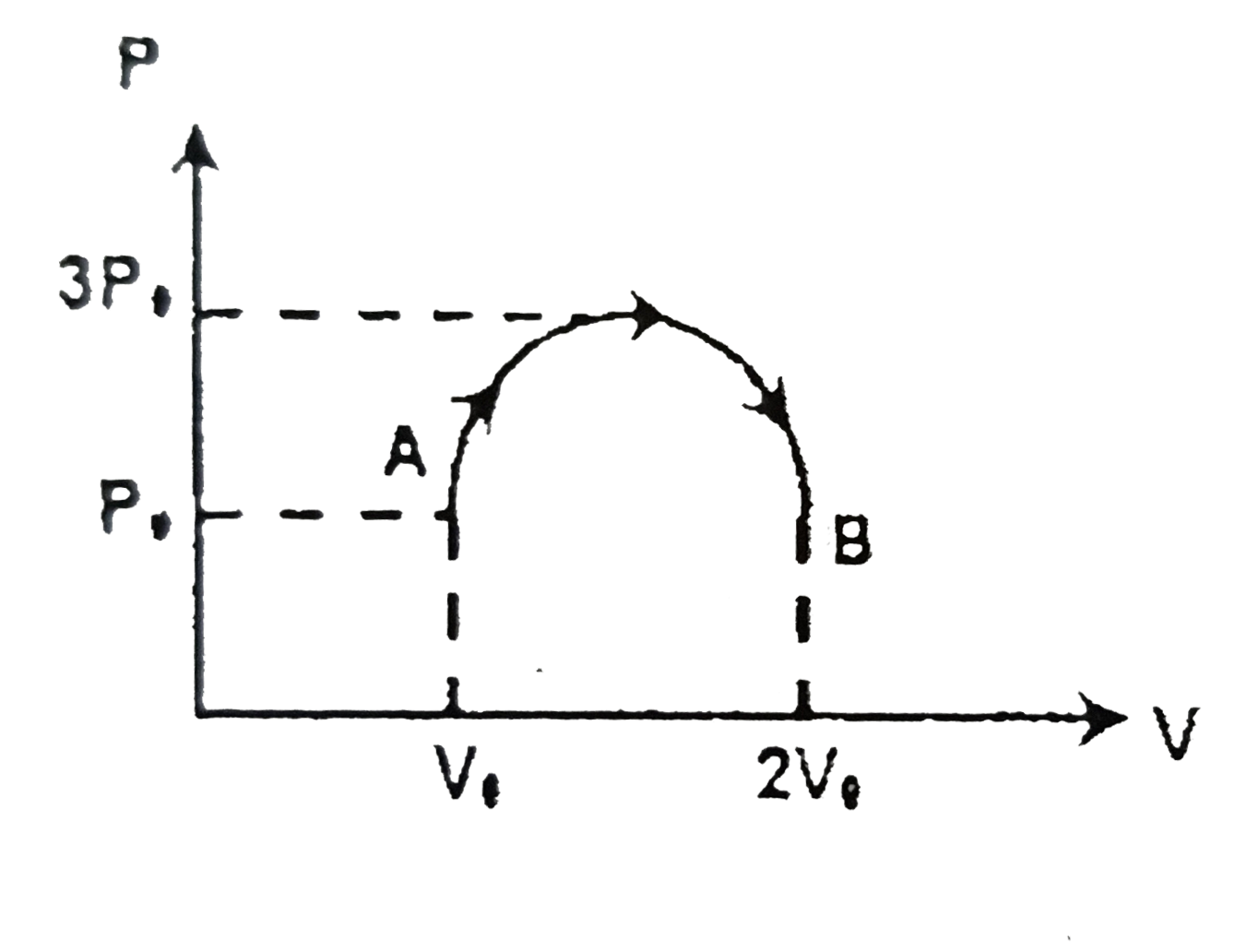Ideal monoatomic gas is taken through a process . Find the molar heat capacity (in terms of for the process? (where is heat supplied and is change in internla energy)
The correct Answer is:
To find the molar heat capacity for the process where dQ=2dU for an ideal monoatomic gas, we can follow these steps:
Step 1: Understand the relationship between heat, internal energy, and molar heat capacity
We know that the change in internal energy dU for an ideal gas can be expressed as:
dU=NCvdT
where N is the number of moles, Cv is the molar heat capacity at constant volume, and dT is the change in temperature.
Step 2: Substitute dU into the equation for dQ
Given the relationship dQ=2dU, we can substitute dU:
dQ=2(NCvdT)=2NCvdT
Step 3: Express dQ in terms of molar heat capacity
The heat supplied dQ can also be expressed in terms of the molar heat capacity C:
dQ=NCdT
where C is the molar heat capacity for the process.
Step 4: Set the two expressions for dQ equal to each other
Now we can set the two expressions for dQ equal to each other:
NCdT=2NCvdT
Step 5: Cancel N and dT from both sides
Assuming N and dT are not zero, we can cancel them:
C=2Cv
Step 6: Find Cv for a monoatomic gas
For a monoatomic ideal gas, the molar heat capacity at constant volume Cv is given by:
Cv=fR2
where f is the degrees of freedom. For a monoatomic gas, f=3:
Cv=3R2
Step 7: Substitute Cv back into the equation for C
Now substituting Cv into the equation for C:
C=2Cv=2(3R2)=3R
Conclusion
Thus, the molar heat capacity for the process is:
3R
---
We know that the change in internal energy dU for an ideal gas can be expressed as:
dU=NCvdT
where N is the number of moles, Cv is the molar heat capacity at constant volume, and dT is the change in temperature.
Given the relationship dQ=2dU, we can substitute dU:
dQ=2(NCvdT)=2NCvdT
The heat supplied dQ can also be expressed in terms of the molar heat capacity C:
dQ=NCdT
where C is the molar heat capacity for the process.
Now we can set the two expressions for dQ equal to each other:
NCdT=2NCvdT
Assuming N and dT are not zero, we can cancel them:
C=2Cv
For a monoatomic ideal gas, the molar heat capacity at constant volume Cv is given by:
Cv=fR2
where f is the degrees of freedom. For a monoatomic gas, f=3:
Cv=3R2
Now substituting Cv into the equation for C:
C=2Cv=2(3R2)=3R
Thus, the molar heat capacity for the process is:
3R
Topper's Solved these Questions
- KTG & THERMODYNAMICSBOOK - RESONANCECHAPTER - KTG & THERMODYNAMICSEXERCISE - SECTION (D)
2 Videos
- KTG & THERMODYNAMICSBOOK - RESONANCECHAPTER - KTG & THERMODYNAMICSEXERCISE - SECTION (I)
2 Videos
- KTG & THERMODYNAMICSBOOK - RESONANCECHAPTER - KTG & THERMODYNAMICSEXERCISE - SECTION (A)
3 Videos
- KINETIC THEORY OF GASES AND THERMODYNAMICSBOOK - RESONANCECHAPTER - KINETIC THEORY OF GASES AND THERMODYNAMICSEXERCISE - Exercise
64 Videos
- MAGNETIC FIELD AND FORCESBOOK - RESONANCECHAPTER - MAGNETIC FIELD AND FORCESEXERCISE - Exercise
65 Videos
Similar Questions
Knowledge Check
Ideal mono-atomic gas is taken through process such that dQ = 3dU. The molar heat capacity for process is:
A3RB4.5RC4RD2RThe molar heat capacity of a gas in a process
Ais either CVorCPBlies between CVorCPCmay range from zero to infinityDcan have any real valueFor an ideal monoatomic gas during any process T = kV, find out the molar heat capacity of the gas during the process. (Assume vibrational degree of freedom to be active)
A52RB3RC72D4R
Temperature of two moles of a monoatomic gas is increased by 300K in the process p∝V. Find
(a) molar heat capacity of the gas in the given process
(b) heat required in the given process.
View SolutionFind the molar heat capacity (in terms of R) of a monoatomic ideal gas undergoing the process: PV1/2=constant?
View SolutionMethod 1 of Q
Temperature of two moles of a monoatomic gas is increased by 300 K in the process p∝V.
(a) Find molar heat capacity of the gas in the given process.
(b) Find heat given to the gas in that.
View Solution600J of heat is added to a monoatomic gas in a process in which the gas performs a work of 150J. The molar heat capacity for the process is
View SolutionOne mole of an ideal monoatomic gas is taken through the thermodynamic process shown in the P−V diagram. The heat supplied to the system is

View Solution
